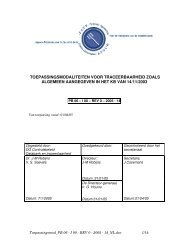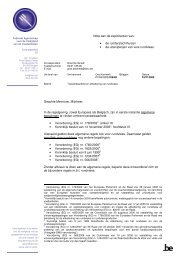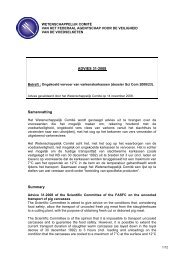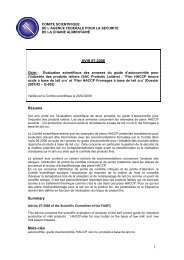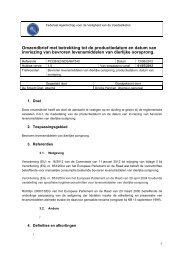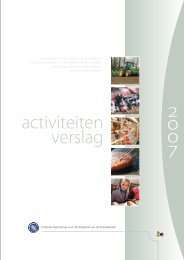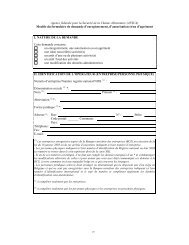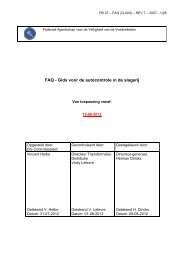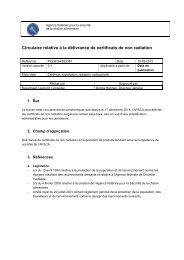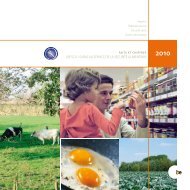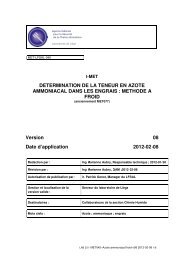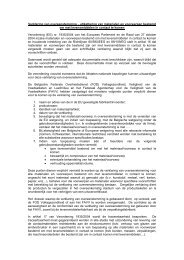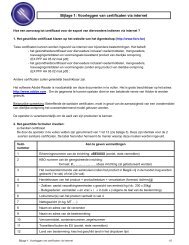Document - FAVV
Document - FAVV
Document - FAVV
- No tags were found...
Create successful ePaper yourself
Turn your PDF publications into a flip-book with our unique Google optimized e-Paper software.
Evaluation of immunoassay kits for determination of ochratoxin A in cereals3.2.3 International approval framesThe compliancy to guidelines is summarised in Table 29.Table 29: Guidelines used for performing the validationEuroproximaR-Biopharm2002/657/EC Yes NoAOAC Guideline Yes NoUSDA/GIPSA/FGIS No NoOther Guidelines No No3.2.4 Characterisation by appropriate analytical performance criteriaFor a reliable screening analytical methods have to fulfil several critical steps of validation as presented in reference 2 ,the ones focused on in this review are summarised in Table 9.Precision: expressed as true and false positive (and negative) rates and it has to be taken into acCount that theserates are related to sensitivity and specificity.Sensitivity: the ability of a method to detect truly positive samples as positive, so the sensitivity rate is theprobability, for a given concentration, that the method will classify the test sample as positive, given that the testsample is a known positive.Specificity: the ability of a method to detect truly negative samples as negative. In the same way, the specificity rateis the probability, for a given concentration, that the method will classify the test sample as negative, given that thetest sample is a known negative.False positive rate: the probability that a test sample is a known negative, given that the test sample has beenclassified as positive by the method.False negative rate: the probability that a test sample is a known positive, given that the test sample has beenclassified as negative by the method.Unreliability region: In quantitative analysis, the uncertainty is the numerical value related to the interval in whichthe component may be found with a given probability. However, for qualitative methods, having binary responses ofthe YES/NO type, there is no meaning for a number associated with the result and expressed as a semi-interval thatis attached to it, so uncertainty is not expressed as a numerical value but as a region of probabilities of committingerror. Moreover, following the nomenclature used until now, it corresponds to the region in which false responsesare obtained (either false positive or negative). As we are dealing with a region where there are certain errorprobabilities, some authors prefer to call it an unreliability region rather than an uncertainty region. This region isdefined by an upper and a lower concentration limit, between which the qualitative method can provide falseresponses. As these false responses can be either positive or negative, the upper and lower limits that define thisunreliability region depend on the probability of obtaining these false responses, which is fixed by the analyst.Cut-off value: a limiting value in the response domain, at which the decision about whether the analyte is above orbelow the specific concentration level must be taken. Regarding the qualitative methods with sensorial responses,this value means the concentration level where the qualitative method differentiates the samples with a certainCODA-CERVA | Administrative evaluation 3-31




